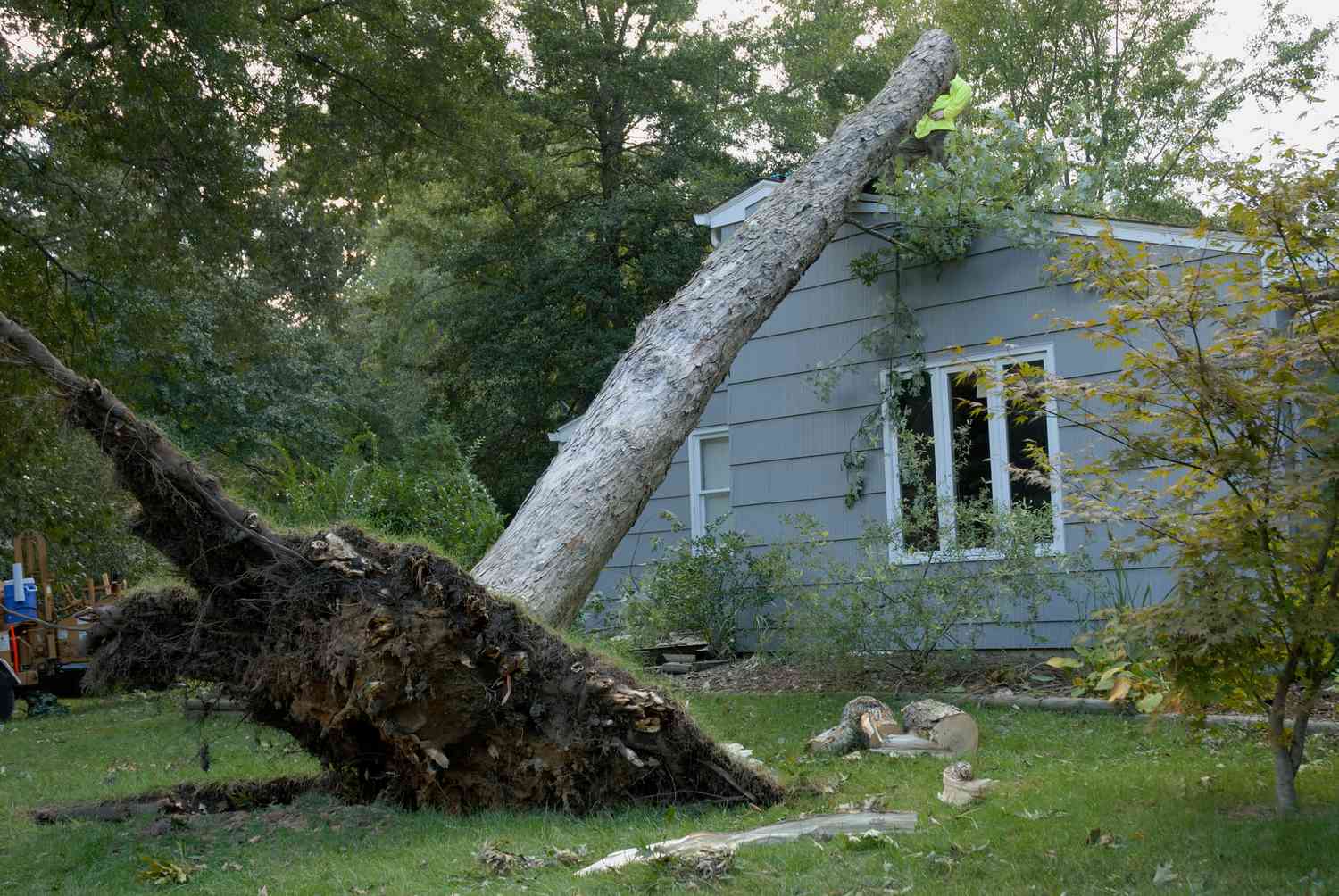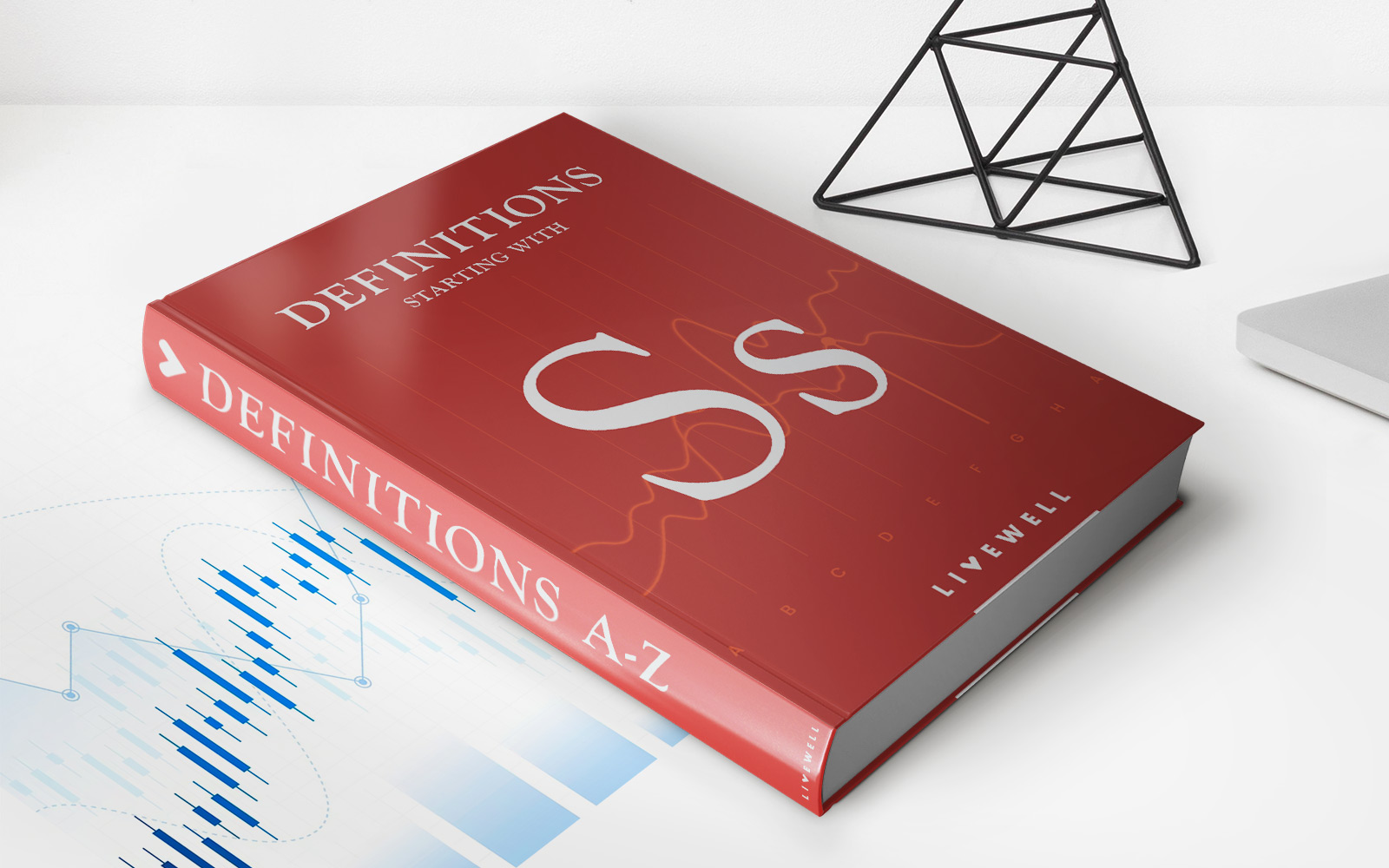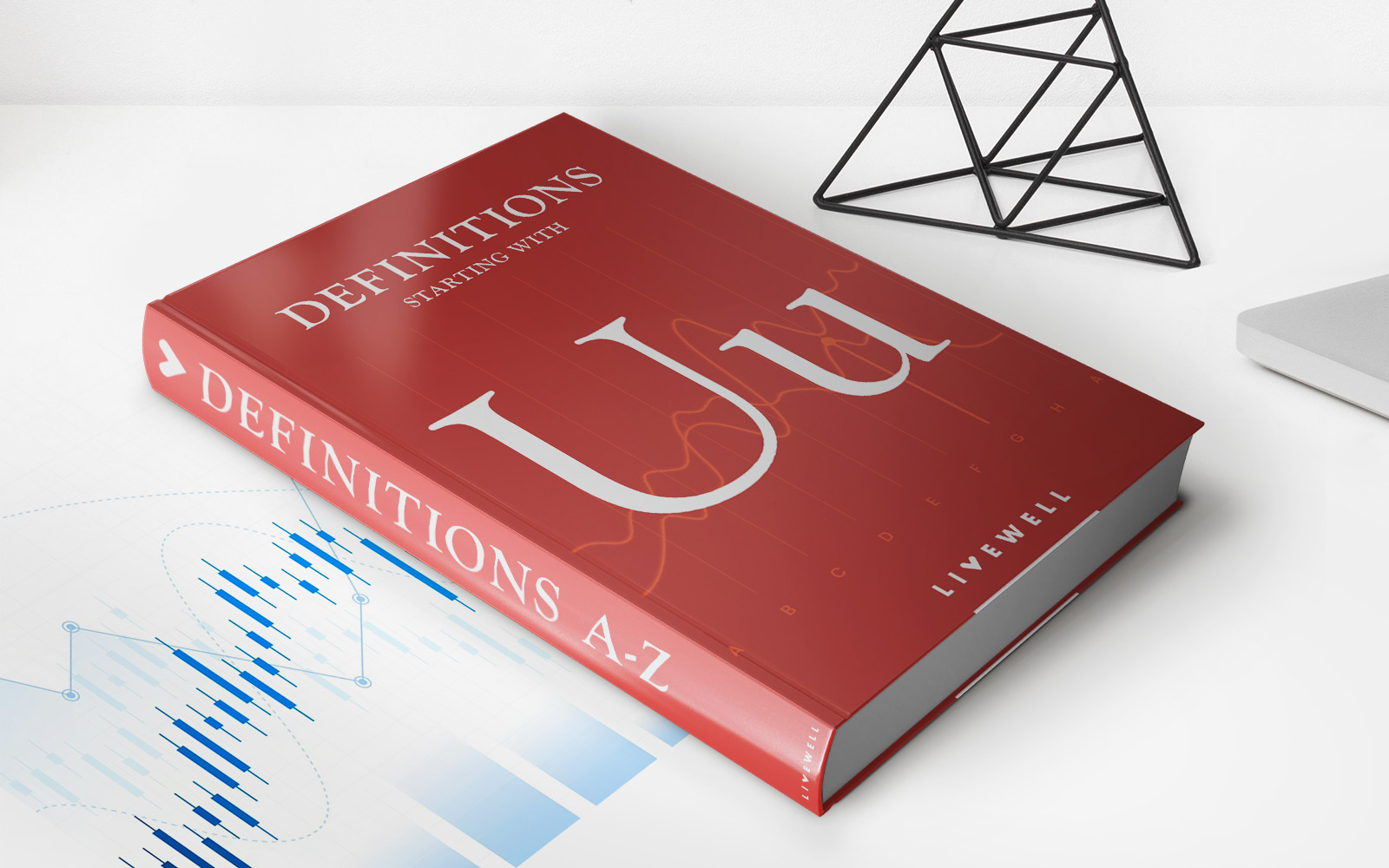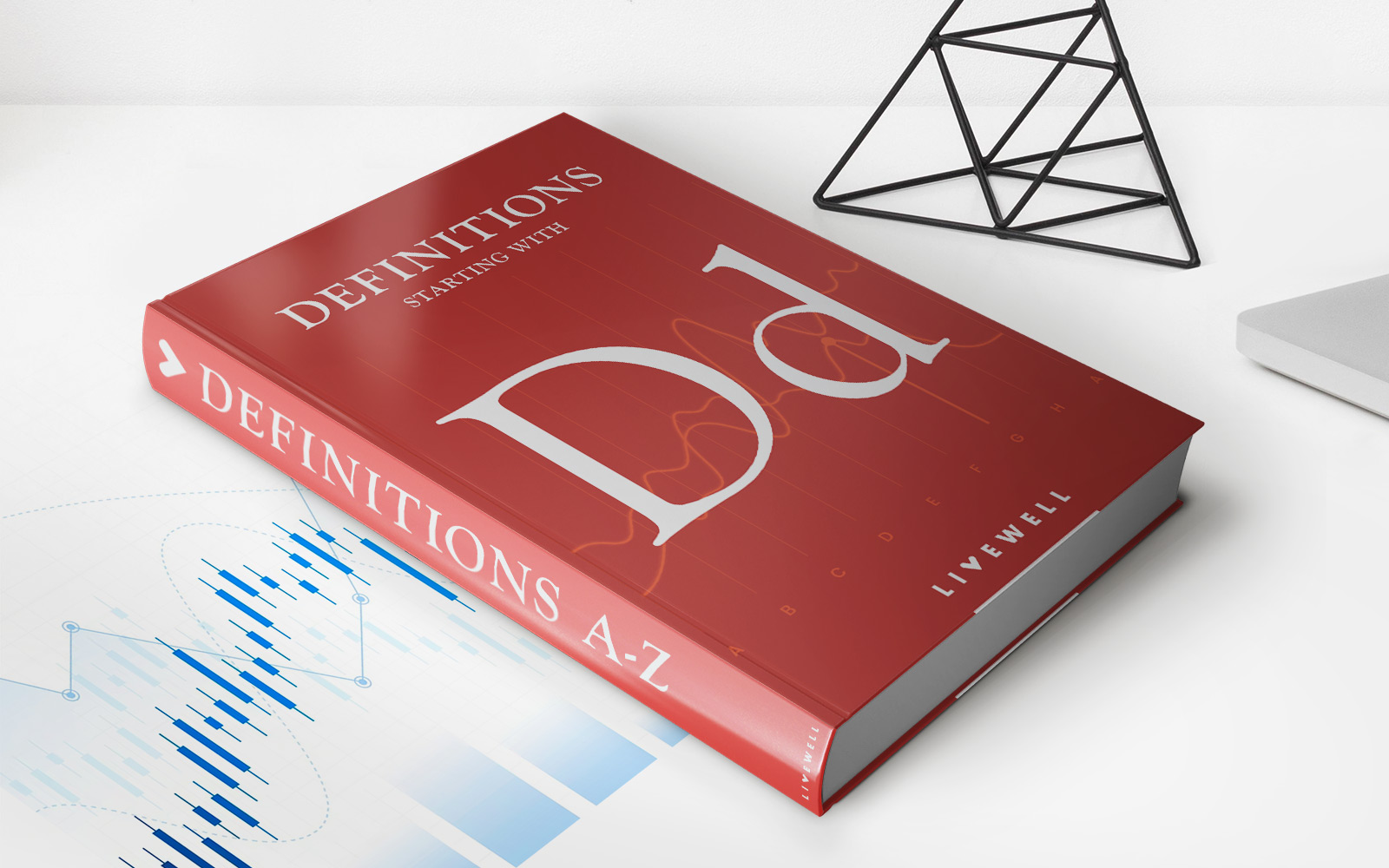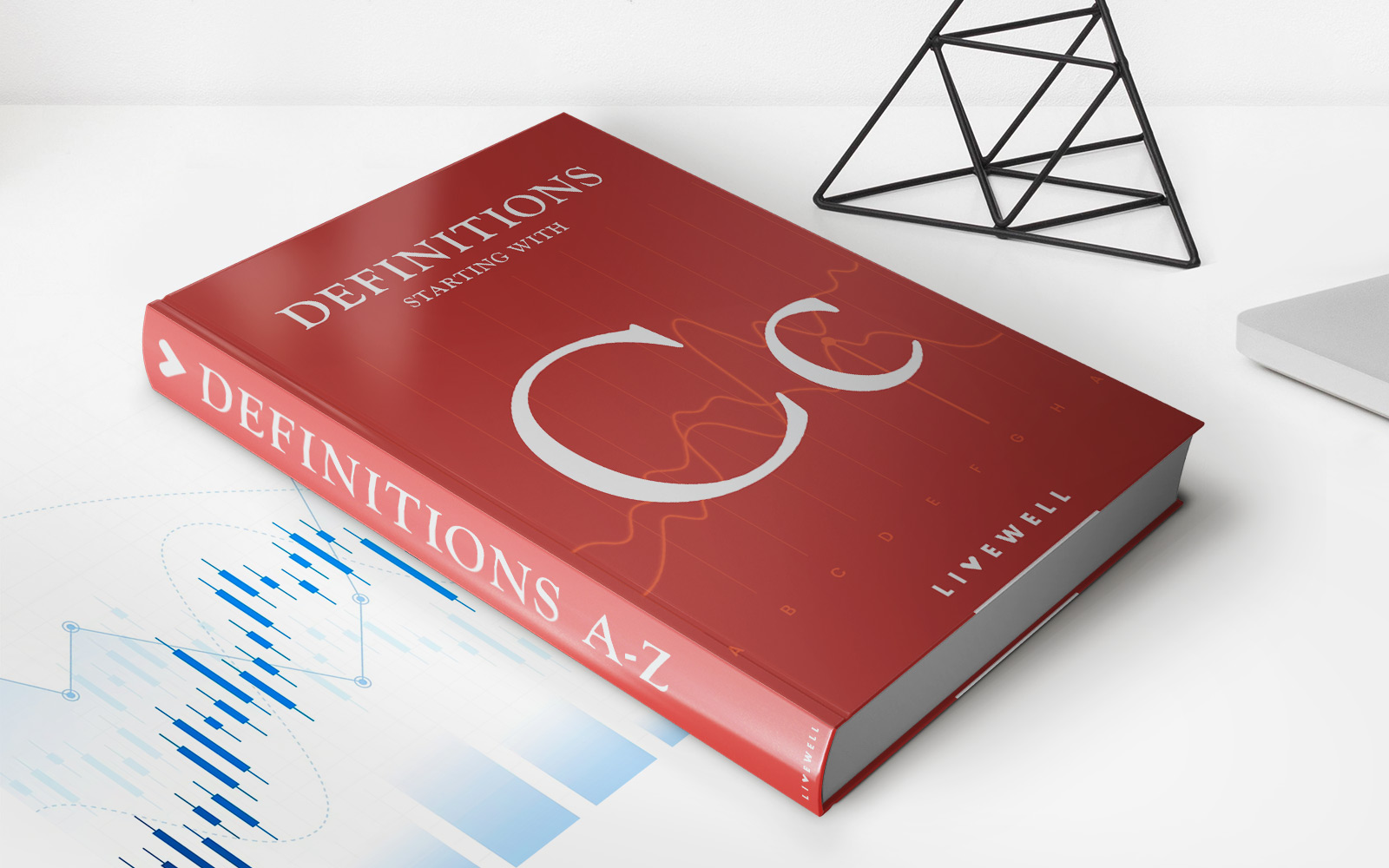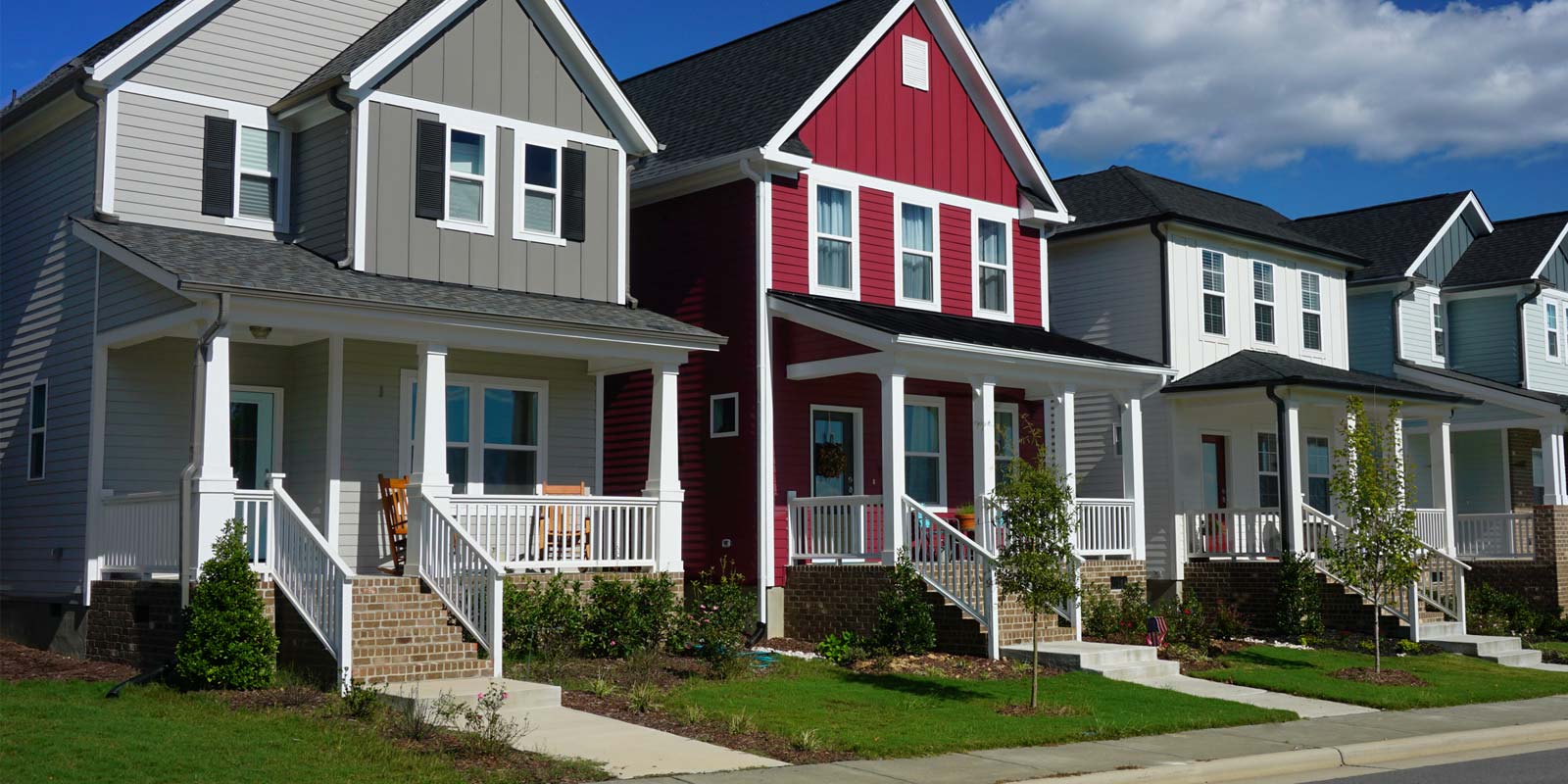

Finance
What Does HOA Liability Insurance Cover?
Published: November 16, 2023
Learn what HOA liability insurance covers and how it can protect your finances. Understand the importance of having proper coverage for your homeowners association.
(Many of the links in this article redirect to a specific reviewed product. Your purchase of these products through affiliate links helps to generate commission for LiveWell, at no extra cost. Learn more)
Table of Contents
Introduction
Welcome to our comprehensive guide on HOA (Homeowners Association) liability insurance. Whether you are a homeowner, board member, or property manager, understanding the importance of HOA liability insurance is crucial to protect the association from potential legal and financial risks.
HOA liability insurance is a type of insurance coverage specifically designed for homeowners associations. It provides protection against liabilities that may arise from accidents, injuries, property damage, or lawsuits within the community or common areas.
In this article, we will delve into the different types of HOA liability insurance coverage, explain what each coverage entails, and provide valuable insights into how to choose the right coverage for your homeowners association.
It is important to note that HOA liability insurance is usually a requirement in most governing documents and is an essential component of responsible association management. Without adequate insurance coverage, an HOA opens itself up to significant financial risk and potential legal battles.
Furthermore, having comprehensive HOA liability insurance coverage not only protects the association’s assets but also provides peace of mind to homeowners that they are part of a well-managed community.
As you read through this guide, we will break down the different types of HOA liability insurance coverage, explain what they cover, and discuss common exclusions and limitations. We will also provide insights on how to choose the right coverage based on your HOA’s unique needs and budget.
Now, let’s dive in and explore the world of HOA liability insurance to ensure your homeowners association is properly protected.
What is HOA Liability Insurance?
HOA liability insurance is a specialized form of insurance coverage that provides protection to homeowners associations against potential liabilities and risks. It is designed to cover the association’s legal and financial obligations arising from accidents, injuries, property damage, or lawsuits within the community or common areas.
As an HOA, you are responsible for managing and maintaining common areas, amenities, and shared property. This includes maintaining sidewalks, parking lots, swimming pools, and playgrounds, among other things. Unfortunately, accidents can happen, and if someone is injured or their property is damaged within these common areas, the association could be held liable.
HOA liability insurance provides coverage for various types of liabilities that an association may face. These can include bodily injury, property damage, personal injury, and legal defense costs.
It is important to note that HOA liability insurance typically covers the association as a whole and its board of directors, officers, and employees. In some cases, it may also extend coverage to volunteers and committee members.
HOA liability insurance is different from individual homeowners’ insurance policies. While homeowners’ insurance primarily covers the individual homeowners’ personal property and liability, the HOA liability insurance focuses on protecting the association as a whole for incidents occurring on common property or involving the association’s activities.
By having HOA liability insurance in place, the association can protect its finances and assets from potential lawsuits and legal claims. This insurance coverage can help the association cover the costs of legal representation, settlements, judgments, and medical expenses, thereby mitigating the financial impact on the association and its members.
It is important for homeowners associations to carefully review their governing documents and consult with insurance professionals to ensure they have the appropriate HOA liability insurance coverage. Adequate coverage should align with the specific needs and potential risks of the community while complying with any legal requirements or industry standards.
In the following sections, we will delve deeper into the different types of HOA liability insurance coverage and what each coverage entails. This will help you gain a better understanding of the specific protections offered by these policies and assist you in selecting the right coverage for your homeowners association.
Types of HOA Liability Insurance Coverage
HOA liability insurance typically includes various types of coverage to protect the homeowners association from different types of liabilities and risks. Understanding these different coverage options is essential to ensure that your HOA has comprehensive protection. Here are the main types of HOA liability insurance coverage:
- Bodily Injury Coverage: This coverage protects the association if someone sustains bodily injury or becomes ill within the common areas of the community. It helps cover medical expenses, rehabilitation costs, and potential legal fees if the injured party decides to file a lawsuit against the HOA.
- Property Damage Coverage: Property damage coverage safeguards the HOA against liabilities arising from damage caused to third-party property within the community’s common areas. Whether it’s a broken window, damaged fence, or accidentally spilling water that damages a resident’s personal belongings, this coverage helps cover the repair or replacement costs.
- Personal Injury Coverage: Personal injury coverage protects the association if a resident or visitor alleges that their reputation or privacy rights have been violated, or if they face wrongful eviction or discrimination within the community. This coverage can help cover legal expenses, settlements, or judgments in such cases.
- Legal Defense Coverage: Legal defense coverage provides financial protection for the HOA in the event of a lawsuit. It covers legal fees, attorney costs, court expenses, and any settlements or judgments against the association. This coverage is crucial to ensure the association has the necessary resources to defend itself in legal proceedings.
- Additional Coverages: In addition to the main types of coverage mentioned above, homeowners associations may have the option to add additional coverages to their policies based on their specific needs. These additional coverages may include coverage for directors and officers (D&O) liability, employee practices liability, cyber liability, or crime and fraud protection.
Each of these coverage options serves a specific purpose and provides different levels of protection. It is essential for HOAs to carefully assess their community’s needs, potential risks, and legal requirements to determine the appropriate types and amounts of coverage to include in their insurance policy.
In the next sections, we will explore each of these types of coverage in more detail, discussing what is typically covered and any specific considerations to keep in mind when selecting insurance coverage for an HOA.
Bodily Injury Coverage
Bodily injury coverage is a crucial component of HOA liability insurance, as it protects the association against liabilities resulting from injuries sustained by individuals within the community’s common areas. Whether it’s a slip and fall accident by a resident, a visitor getting injured while using a community facility, or a contractor getting hurt while performing services for the association, bodily injury coverage provides financial protection to the HOA.
This coverage helps cover medical expenses, including hospital bills, emergency room visits, surgeries, medications, and rehabilitation costs, for individuals who suffer bodily injuries within the common areas. It may also cover the cost of defending against a lawsuit if a person files a claim against the association for their injuries.
It is important to note that bodily injury coverage typically includes protection for injuries caused by the association’s negligence. For example, if an HOA fails to maintain safe conditions, such as addressing slippery surfaces or repairing broken equipment, and someone is injured as a result, the bodily injury coverage can help cover the resulting medical expenses and any legal fees.
However, it is essential to carefully review the policy to understand the scope and limitations of bodily injury coverage. Certain exclusions may apply, such as injuries resulting from intentional acts or criminal actions. Additionally, the coverage may have limits on the amount that can be claimed per occurrence or a maximum limit for all bodily injury claims during the policy term.
When selecting bodily injury coverage for an HOA, it’s important to consider factors such as the size and amenities of the community, the number of residents, and the nature of potential risks within the common areas. This will help determine the appropriate coverage limits to adequately protect the association from potential claims and lawsuits.
Working with an experienced insurance professional can greatly assist in understanding the specific coverage options available and tailoring them to the unique needs of the homeowners association. By ensuring sufficient bodily injury coverage, an HOA can provide financial protection for itself and its members in the event of accidents and injuries within the community’s common areas.
Property Damage Coverage
Property damage coverage is an essential component of HOA liability insurance as it provides protection against liabilities related to damage caused to third-party property within the community’s common areas. Accidents happen, and if someone’s personal property is damaged within the common areas of the association, the HOA may be held responsible for the costs of repair or replacement.
This coverage helps safeguard the association’s finances by covering the costs associated with property damage claims. This could include damages caused by accidents, vandalism, natural disasters, or any other unforeseen event that results in property damage within the common areas.
For example, if a tree falls on a resident’s car in the parking lot, or a child accidentally breaks a neighbor’s window while playing in the community playground, the property damage coverage can help cover the costs of repairing or replacing the damaged property.
It’s important to note that property damage coverage typically includes protection against liabilities resulting from the association’s negligence or failure to maintain the common areas properly. However, intentional acts, such as malicious vandalism, may not be covered under the policy.
When selecting property damage coverage, it is crucial to carefully review the policy to understand the coverage limits, deductibles, and any exclusions. Some policies may have specific limitations on certain types of property damage, such as high-value items or specific structures within the community.
It is recommended that homeowners associations work closely with their insurance provider to assess the potential risks involved and determine appropriate coverage limits. This will help ensure that the association is adequately protected and can handle the financial implications of property damage claims that may arise.
By having comprehensive property damage coverage in place, an HOA can provide peace of mind to its members that their property within the common areas is protected. This coverage not only protects the association’s finances but also contributes to creating a sense of security and trust within the community.
Personal Injury Coverage
Personal injury coverage is an important aspect of HOA liability insurance that protects the association against liabilities related to non-physical injuries or harm suffered by individuals within the community. It provides coverage for claims arising from allegations of defamation, invasion of privacy, wrongful eviction, discrimination, or other similar incidents.
This coverage helps protect the HOA financially by covering legal expenses, settlements, or judgments that may arise from personal injury claims made against the association. Personal injury claims can result from actions or omissions by the association, its board members, employees, or even fellow residents.
For example, if a resident alleges that the association spread false information about them, causing damage to their reputation, personal injury coverage may cover the legal costs of defending against the claim and any resulting settlement or judgment.
It’s important to note that personal injury coverage typically covers claims arising from unintentional acts or negligence. It may not cover intentional acts of harm or criminal conduct.
When selecting personal injury coverage, it’s crucial to carefully review the policy to understand the specific protections and limitations provided. Policies may differ in terms of coverage limits, exclusions, and the types of personal injury claims that are covered.
Associations should work closely with their insurance provider to assess their potential risks and ensure that adequate personal injury coverage is in place. By doing so, the association can protect itself against potential financial and reputational risks associated with personal injury claims.
It’s worth mentioning that personal injury claims within an HOA setting can be complex, involving disputes between residents or community members. Having comprehensive personal injury coverage can help mitigate conflicts and provide a resolution framework, ensuring a harmonious and supportive community environment.
Legal Defense Coverage
Legal defense coverage is a vital component of HOA liability insurance that provides financial protection for the association in the event of a lawsuit. It covers the costs associated with legal representation, attorney fees, court expenses, and any settlements or judgments against the association.
When an HOA faces a lawsuit, whether it’s related to bodily injury, property damage, personal injury, or other liability claims, the legal defense coverage kicks in to support the association’s defense. Legal fees and court costs can add up quickly, and without proper coverage, the financial burden can be overwhelming for the association.
Legal defense coverage helps ensure that the association has the necessary resources to hire experienced legal counsel to defend its interests in court. This coverage provides financial protection from the potentially significant costs of a legal battle, which may include pretrial preparations, discovery, depositions, expert witness fees, and more.
It’s important to understand the terms and conditions of the legal defense coverage, such as coverage limits, deductible requirements, and any exclusions that may apply. Certain policies may have a maximum limit for legal defense costs, and some coverage may exclude intentional acts or fraud-related claims.
When evaluating legal defense coverage options, homeowners associations should consider the potential risks within their community, the likelihood of litigation, and the financial resources available to cover legal expenses. Working with an experienced insurance professional can help assess the association’s needs and identify the most appropriate coverage options.
Having robust legal defense coverage is crucial for an HOA to protect itself and its members. It provides the necessary support to navigate legal proceedings and ensures that the association’s interests are properly represented in court.
By investing in comprehensive legal defense coverage, an HOA can minimize financial risks, maintain its reputation, and demonstrate its commitment to advocating for the best interests of the community it serves.
Additional Coverages
In addition to the main types of coverage discussed earlier, homeowners associations may have the option to add additional coverages to their HOA liability insurance policy. These additional coverages are designed to provide extra protection against specific risks or liabilities that may be unique to the association’s operations or community. Here are some common additional coverages that HOAs may consider:
- Directors and Officers (D&O) Liability: D&O liability coverage protects the association’s board members and officers from legal claims arising from their decisions or actions taken on behalf of the association. It helps cover legal defense costs, settlements, judgments, and even personal assets of board members in certain situations.
- Employee Practices Liability: This coverage protects the association against claims of wrongful employment practices or violations of labor laws. It covers scenarios such as discrimination, harassment, wrongful termination, or failure to promote.
- Cyber Liability: Cyber liability coverage safeguards the association from risks associated with data breaches, hacking, or other cyber-attacks. It helps cover costs such as notifying affected individuals, providing credit monitoring services, legal fees, and regulatory fines.
- Crime and Fraud Protection: This coverage protects the association against financial losses resulting from theft, embezzlement, forgery, or other fraudulent activities committed by employees, volunteers, or third parties.
When considering additional coverages, it’s essential for HOAs to assess the specific risks and potential liabilities they face. This can be done by conducting a thorough risk assessment and seeking guidance from insurance professionals who specialize in HOA insurance.
Adding these additional coverages to the HOA liability insurance policy can provide complete protection and peace of mind for the association and its members. It is crucial to review the policy terms, limits, and exclusions associated with each additional coverage to ensure they align with the association’s needs.
By customizing the HOA liability insurance policy with appropriate additional coverages, an association can ensure that all areas of potential liability are addressed, reducing the financial risk and protecting the assets and reputation of the community.
Exclusions and Limitations
While HOA liability insurance provides important coverage for homeowners associations, it’s crucial to understand that there are certain exclusions and limitations to be aware of. These exclusions and limitations determine the scope of coverage and the situations in which the insurance may not apply. It’s essential for HOAs to carefully review their insurance policy to understand these exclusions and limitations. Here are some common examples:
- Intentional Acts: Insurance policies typically exclude coverage for intentional acts committed by the association, its board members, or its employees, as these acts are considered outside the realm of accidental or negligent conduct.
- Criminal Activities: Insurance policies generally do not cover liabilities arising from criminal activities, such as fraud, theft, or other illegal actions committed by individuals associated with the association.
- War and Terrorism: Insurance policies may exclude coverage for damages or liabilities arising from acts of war, terrorism, and similar acts of violence or political unrest.
- High-Risk Activities: Certain high-risk activities, such as extreme sports or hazardous events, may be excluded from coverage. It’s important for the association to review the policy and consider specific endorsements or additional coverage for such activities if necessary.
- Pollution and Environmental Claims: Insurance policies may limit or exclude coverage for liabilities arising from pollution, environmental contamination, or cleanup costs, as these risks often require specialized environmental insurance coverage.
- Excess or Deductible: Insurance policies may include deductibles, which are the amounts that the association must pay out of pocket before the coverage takes effect. Additionally, policies may have maximum limits or excess amounts that the association is responsible for in the event of a claim.
It’s crucial for HOAs to understand these exclusions and limitations to properly assess the extent of their coverage. Insurance policies can be customized to a certain extent, and specific endorsements or riders can be added to address certain exclusions or limitations. Associations should work closely with insurance professionals to understand the options available and tailor their coverage to meet their unique needs.
By being aware of these exclusions and limitations, HOAs can ensure they have a comprehensive understanding of their insurance coverage and take appropriate steps to address any potential gaps or risks that may arise in specific situations.
How to Choose the Right HOA Liability Insurance Coverage
Choosing the right HOA liability insurance coverage is a critical decision that requires careful consideration. Here are some key factors to keep in mind when selecting the appropriate coverage for your homeowners association:
- Assess Your Association’s Needs: Evaluate the specific needs and risks that your association faces. Consider factors such as the size of the community, the amenities and common areas, potential liabilities, and any legal requirements or industry standards that must be met.
- Work with an Experienced Insurance Professional: Collaborate with a knowledgeable insurance professional who specializes in HOA insurance. They can guide you through the process, help identify potential risks, and recommend appropriate coverage options based on their experience and expertise in the industry.
- Review Governing Documents: Carefully review the association’s governing documents, such as the CC&Rs (Covenants, Conditions, and Restrictions), to understand any insurance requirements or recommendations that may be outlined. Compliance with these requirements is crucial to ensure the association meets its legal obligations.
- Evaluate Coverage Limits: Assess the potential costs associated with liabilities and select coverage limits that provide adequate protection. Consider factors such as the size of the community, the number of residents, and the nature of potential risks within the common areas.
- Consider Additional Coverages: Evaluate the need for additional coverages, such as directors and officers (D&O) liability, employee practices liability, cyber liability, or crime and fraud protection. These coverages can provide extra layers of protection tailored to the specific needs of your association.
- Review Policy Exclusions and Limitations: Carefully review the exclusions and limitations outlined in the insurance policy to understand the situations and liabilities that may not be covered. Make sure to address any potential gaps in coverage through additional endorsements or riders, if necessary.
- Compare Multiple Quotes: Obtain quotes from multiple insurance providers to compare coverage options, policy terms, and pricing. This allows you to make an informed decision and find the most suitable coverage for your association’s needs and budget.
- Regularly Review and Update Coverage: Regularly review your association’s insurance coverage to ensure it aligns with the changing needs and risks of the community. As the association evolves, update your coverage to maintain adequate protection.
By following these guidelines and taking a proactive approach to selecting and maintaining HOA liability insurance coverage, you can protect your association’s finances, assets, and reputation. A well-chosen insurance policy provides peace of mind to homeowners and demonstrates the association’s commitment to responsible and effective management.
Conclusion
HOA liability insurance is a critical component of responsible homeowners association management. It provides crucial protection against potential liabilities, lawsuits, and financial risks that can arise from accidents, injuries, property damage, or other legal claims within the community’s common areas.
Throughout this comprehensive guide, we have explored the different types of HOA liability insurance coverage, including bodily injury, property damage, personal injury, and legal defense. We have also discussed additional coverages that can be added to tailor the insurance policy according to the association’s unique needs.
When selecting HOA liability insurance coverage, it is essential to assess the specific risks and needs of your association, consult with insurance professionals who specialize in HOA insurance, and carefully evaluate the policy terms, exclusions, and limitations. By doing so, you can ensure that you have comprehensive coverage that adequately protects your association’s finances and assets.
Regularly reviewing and updating your insurance coverage is equally important to ensure that it aligns with the evolving needs of your association. It’s crucial to maintain an open line of communication with your insurance provider, staying informed about any changes in the industry or legal requirements that may impact your coverage.
Remember, having the right HOA liability insurance coverage not only protects your association but also provides peace of mind to homeowners within the community. It demonstrates your dedication to responsible management and safeguards your association’s reputation.
By following the guidelines outlined in this guide and working with insurance professionals who specialize in HOA insurance, you can navigate the complexities of insurance coverage and select the appropriate protection for your homeowners association. With the right insurance in place, you can focus on fostering a vibrant, thriving, and harmonious community for all residents to enjoy.




